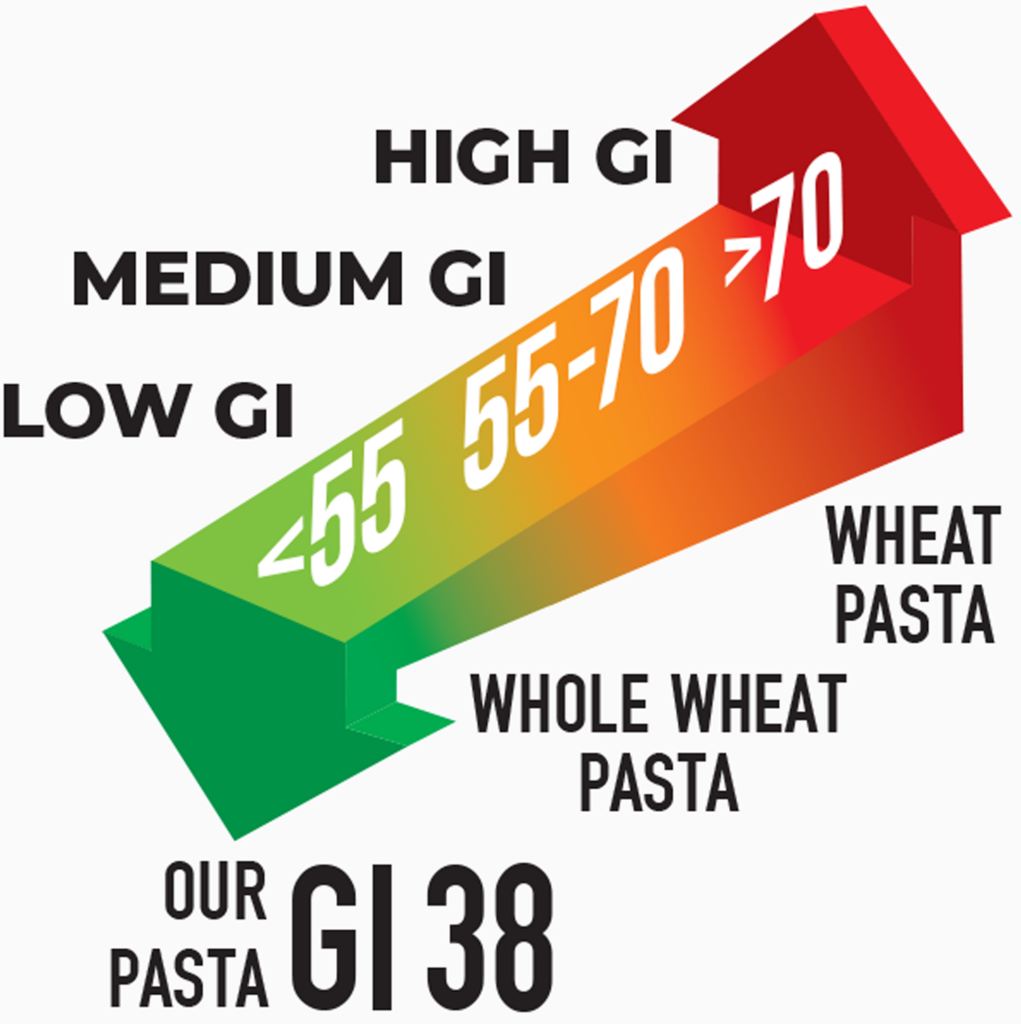In the simplest terms, the Glycemic Index (GI) is a tool that measures how carbohydrates affect blood glucose levels. It then evaluates the quality of carbohydrates based on this outcome. Carbohydrates are one of the essential elements of the human diet, aiming to provide fuel to our bodies. It turns out that not all carbohydrate-containing products are equal. High-GI carbohydrate foods cause a rapid increase in blood sugar levels, followed by a sudden drop. On the other hand, low-GI foods are absorbed and digested more slowly. Such slow release of glucose into the bloodstream is more beneficial for our body. Among other things, it helps in fighting diseases such as type 1 and 2 diabetes, in insulin resistance, as well as in maintaining energy correctly and controlling weight.
HOW DO WE CLASSIFY GI?

- Low: 55 or less
- Medium: 55 – 70
- High: 70 and above
Foods with a low GI contain slowly digested carbohydrates, which cause a more gradual decline in blood sugar levels and can help you feel fuller for longer.
It’s important to consider factors that contribute to the GI value:
That increase GI
- high content of glucose, sucrose,
- low content of proteins, fats, fiber, organic acids,
- refining of cereal grains, milling, roasting, expanding,
- cooking, especially boiling until soft,
- high degree of pulverization (purees, mousses, cream soups),
- peeling off the skin, juicing (which reduces the content of dietary fiber),
- high degree.
That lower GI
- high content of fiber (especially soluble),
- high content of protein and fat,
- high content of organic acids (e.g., malic, citric, lactic) – including fermented products, pickles, sourdough bread,
- cooling after cooking, staling of bread (high content of resistant starch),
- cooking al dente, eating raw products,
- minimal processing,
- low degree of ripeness (e.g., green bananas),
- consuming a previous meal with a low GI.









